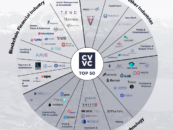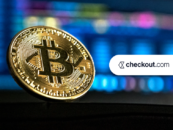Stories about non-fungible tokens (NFTs) have been everywhere this past month: meme animations, musical albums, digital artworks, and even virtual houses, are being sold at exorbitant prices with NFT tokens, and now both the New York Times and the Times Magazine are planning sales of their own NFTs. Critics warn that the ongoing NFT frenzy could be just the latest crypto fad, with signs of a bubble waiting to burst.
NFTs are tokens that are not interchangeable with one another. One bitcoin holds the same value as any other bitcoin, making it therefore fungible. Assets like diamonds, land or baseball cards are not fungible because each unit has unique qualities that add or subtract value.
NFTs were created to track ownership of such unique items using blockchain technology. They can represent pretty much anything, but so far, application has been largely focused on digital files such as art, audio, videos, items in video games and other forms of creative work. While the digital files themselves are infinitely reproducible, the NFTs representing them are unique and tracked on their underlying blockchains, providing buyers with proof of ownership.
The reason why NFTs are becoming so popular in the digital art space is because these tokens are helping artists create financial value for their work by adding scarcity. Digital art has long been undervalued since it’s so freely available. Adding a distinctive element such as a unique NFT to an art piece creates scarcity since there’s just one in the world like it.
NFTs are currently having their big-bang moment, with collectors and speculators having spent more than US$220 million on an array of NFT-based digital items in the past month alone, according to market tracker Nonfungible.com, compared with US$250 million throughout all of 2020. On March 11, digital artist Mike Winkelmann, known as Beeple, sold a piece at Christie’s for US$69 million – the third highest price ever fetched by a living artist.
VCs join the NFT craze
The NFT craze is happening alongside a rally in cryptocurrencies like bitcoin and ether. The former surged almost 500% since its latest bull run began in October 2020, while the latter, which is often used to trade NFTs, jumped more than 300%.
Investors have taken noticed and are now writing big checks for startups in the booming space. Data shared with CNBC by Pitchbook suggest that investors have poured US$90 million into NFT and digital collectibles companies so far in 2021. That’s almost triple the US$35 million the NFT startups raised last year.
Sorare, a blockchain-based fantasy football game, raised about US$50 million in February from big-name investors including Benchmark and Accel. It’s 2021’s biggest NFT deal so far.
Andrei Brasoveanu, a general partner at Accel, called NFTs “one of the most exciting developments we’ve seen in crypto for years.”
“It’s one of those developments that has mass market appeal and could potentially impact a world outside the crypto niche,” he told CNBC.
The second largest deal went to OpenSea, an NFT marketplace, which announced a US$23 million round of funding earlier this month led by Andreessen Horowitz. OpenSea CEO Devin Finzer said the platform has seen transaction volumes grow 100 times over the last six months.
“We just think there is a huge market. I mean, look at Apple last year. People purchased US$61 billion of digital content” on the App Store, said Kathryn Haun, the Andreessen partner who led the deal. “We don’t think it’s silly or faddish at all,” she added, referring to the NFT craze.
OpenSea was launched back in 2017 and emerged during the CryptoKitties fad. CryptoKitties, a blockchain game developed by Dapper Labs, allows users to buy, collect, breed and sell virtual cats. The game reached massive popularity in 2017, congesting the Ethereum network and causing it to reach an all-time high in the number of transactions.
Critics warn of bubble risk
The ongoing NFT frenzy has had many critics warn of a possible bubble. In fact, Winkelmann himself believes that NFT art is “absolutely” in a bubble.
“I actually do think there will be a bubble, to be quite honest,” Winkelmann told the BBC. “And I think we could be in that bubble right now.”
Others are even more skeptical. “There are some artists absolutely making bank on this stuff… it’s just that you probably won’t,” warned David Gerard, author of Attack of the 50-foot Blockchain.
The people selling the NFTs are actually “the same guys who’ve always been at it, trying to come up with a new form of worthless magic bean that they can sell for money,” he added.
For many, NFTs are just the latest get-rich-quick scheme in the cryptosphere. “This is just about the pure desire to get rich that drives everything in the crypto space right now,” Frances Coppola, a finance and economics commentator, told the Financial Times. “It’s another of these bubble manias.”
Featured image credit: Background vector created by Kerfin7 – www.freepik.com






